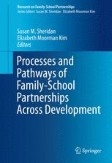Search
Search Results
-

-
The Role of Conditional Likelihoods in Latent Variable Modeling
In psychometrics, the canonical use of conditional likelihoods is for the Rasch model in measurement. Whilst not disputing the utility of conditional...

-
Longitudinal Modeling of Age-Dependent Latent Traits with Generalized Additive Latent and Mixed Models
We present generalized additive latent and mixed models (GALAMMs) for analysis of clustered data with responses and latent variables depending...

-
Meditation and Cognitive Outcomes: A Longitudinal Analysis Using Data From the Health and Retirement Study 2000–2016
ObjectiveWe aimed to assess the association between meditation practice and cognitive function over time among middle-aged and older adults.
... -
Efficient Likelihood Estimation of Generalized Structural Equation Models with a Mix of Normal and Nonnormal Responses
A maximum likelihood estimation routine is presented for a generalized structural equation model that permits a combination of response variables...

-
Inequality Within the Family: A Comparative Analysis of Gendered Working Time Preferences Among Dual-Earner Couples
The preference for reduced work hours is well-known to be associated with various social ramifications, but research on the determinants of workers’...

-
Maximum Likelihood Estimation of Multilevel Structural Equation Models with Random Slopes for Latent Covariates
A maximum likelihood estimation routine for two-level structural equation models with random slopes for latent covariates is presented. Because the...

-
Correction for Item Response Theory Latent Trait Measurement Error in Linear Mixed Effects Models
When latent variables are used as outcomes in regression analysis, a common approach that is used to solve the ignored measurement error issue is to...
-
Modeling competence development in the presence of selection bias
A major challenge for representative longitudinal studies is panel attrition, because some respondents refuse to continue participating across all...

-
Parameterschätzung und Messgenauigkeit in der Item-Response-Theorie (IRT)
In der Item-Response-Theorie (IRT) existieren verschiedene Verfahren der Item- und Personenparameterschätzung, wobei sich grundsätzlich...
-
Differentiating between mixed-effects and latent-curve approaches to growth modeling
In psychology, mixed-effects models and latent-curve models are both widely used to explore growth over time. Despite this widespread popularity,...

-
An autoregressive growth model for longitudinal item analysis
A first-order autoregressive growth model is proposed for longitudinal binary item analysis where responses to the same items are conditionally...

-
Intergenerational Social Mobility and Popular Explanations of Poverty: A Comparative Perspective
This article explores the consequences of intergenerational social mobility on perceptions of popular explanations of poverty. It is hypothesised...

-
A modular approach for item response theory modeling with the R package flirt
The new R package flirt is introduced for flexible item response theory (IRT) modeling of psychological, educational, and behavior assessment data. flirt...

-
Comparison of Substance Use Typologies as Predictors of Sexual Risk Outcomes in African American Adolescent Females
African American female adolescents have a disproportionate risk of sexually transmitted infections (STIs) and other adverse sexual health outcomes....
-
Uncovering Processes and Pathways in Family–School Research: Modeling Innovations for Handling Data Complexities
For applied researchers interested in using quantitative data to evaluate research questions about family–school partnership programs, the data...
-
Adolescent Drinking and Motivated Decision-Making: A Cotwin-Control Investigation with Monozygotic Twins
The present study used a monozygotic (MZ) cotwin-control (CTC) design to investigate associations between alcohol use and performance on the Iowa...

-
Additive Multilevel Item Structure Models with Random Residuals: Item Modeling for Explanation and Item Generation
An additive multilevel item structure (AMIS) model with random residuals is proposed. The model includes multilevel latent regressions of item...

-
A generalized longitudinal mixture IRT model for measuring differential growth in learning environments
This article describes a generalized longitudinal mixture item response theory (IRT) model that allows for detecting latent group differences in item...

-
Enema Use Among Men Who Have Sex with Men: A Behavioral Epidemiologic Study with Implications for HIV/STI Prevention
Enema use or douching is a risk factor for HIV/STI in men who have sex with men (MSM). However, few studies have explored enema use practices. We...
